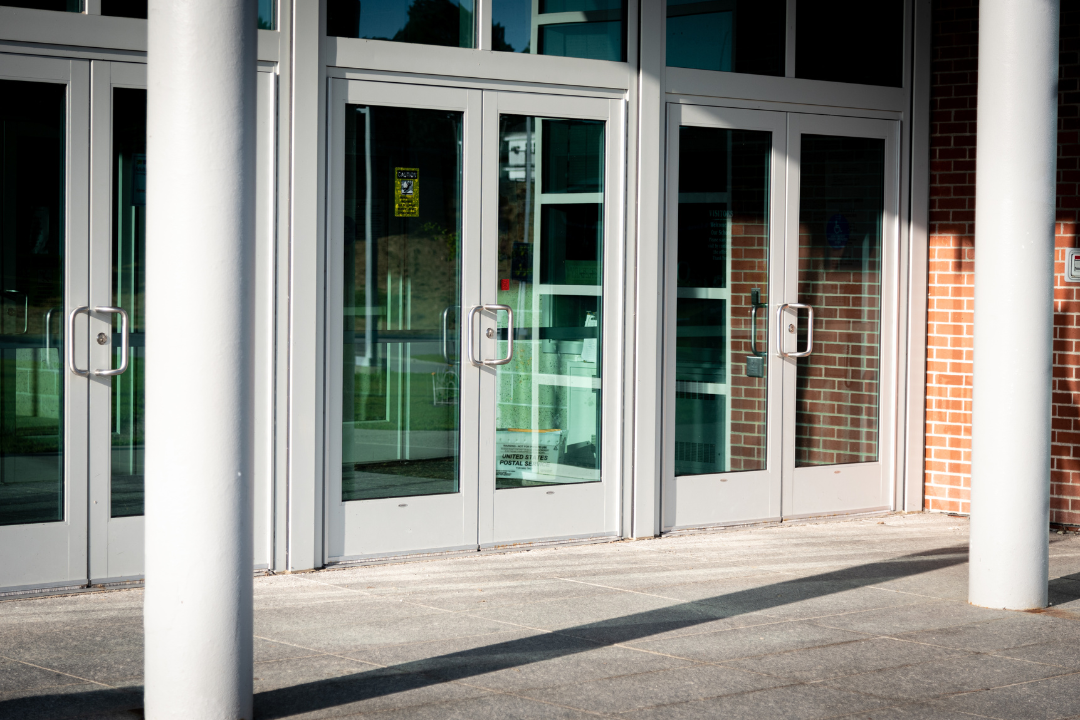When it comes to real estate investment strategies, one option that often gets overlooked is leaseback solutions. Understanding the key considerations for leaseback solutions, or “Leaseback Considerations”, can open up new opportunities for both businesses and investors. This strategy involves selling a property and then leasing it back from the new owner. It’s a complex process with many factors to consider, which is why KROY Investments is committed to guiding you through each step. In this blog post, we’ll delve into the essential aspects you need to consider when exploring leaseback solutions.
Exploring Leaseback Considerations for Real Estate Investment
In the world of real estate, leaseback solutions have emerged as a strategic tool for both investors and property owners. But what exactly are leaseback solutions, and how do they work? Let’s delve deeper.
Defining Sale-Leaseback in Real Estate Transactions
A leaseback, also known as a sale-leaseback, is a financial transaction where an asset’s owner sells it and then leases it back from the buyer. In essence, this arrangement allows the seller to continue using the asset while no longer owning it.
The Process: How Leaseback Transactions Work
The process of a leaseback begins when a property owner sells their asset to an investor. Following the sale, the former owner then leases the property back from the investor for a specified period. This arrangement provides the seller with a lump sum of cash while allowing them to remain on the property as a tenant.
Business Benefits: Why Companies Opt for Leaseback Solutions
Leaseback solutions are commonly used by businesses that want to free up capital tied up in real estate assets. By selling the property and leasing it back, the business can inject cash into its operations without disrupting its activities. It’s a strategy that offers flexibility and financial benefits.
Trends in Miami: The Rise of Leaseback Real Estate Strategies
In Miami, leaseback solutions are becoming increasingly popular. With the city’s dynamic real estate market, businesses and investors alike are leveraging leaseback arrangements to maximize their financial flexibility and investment potential.

Weighing the Benefits and Drawbacks of Leaseback Arrangements
Like any financial strategy, leaseback solutions come with their own set of advantages and disadvantages. Understanding these can help you make an informed decision.
Benefits of Leaseback Solutions
Leaseback solutions offer several benefits. They provide immediate access to capital, allow businesses to free up resources tied up in real estate, and offer tax benefits. Furthermore, leaseback arrangements can provide stability, as businesses can continue operating in a familiar location.
Potential Drawbacks of Leaseback Solutions
On the flip side, leaseback solutions may not be suitable for everyone. The seller loses ownership of the property, which could appreciate in value over time. Additionally, the seller becomes a tenant, which means they must adhere to the terms of the lease agreement, potentially limiting their control over the property.
Essential Factors: Deep Dive into Leaseback Considerations
As we delve deeper into the realm of leaseback solutions, it’s crucial to consider several key factors. These considerations, particularly in the context of Miami’s vibrant real estate market, can significantly influence the success of a leaseback arrangement.
Financial Dynamics: Leaseback Solutions in Miami’s Economy
In Miami, financial considerations play a pivotal role in leaseback solutions. These include the sale price of the property, the lease rate, and the terms of the lease agreement. It’s essential to ensure that the financial aspects of the deal align with your business objectives and financial capacity.
Real Estate Pulse: Market Trends Impacting Leaseback in Miami
The real estate market in Miami is dynamic and can significantly impact leaseback arrangements. Factors such as property values, rental rates, and market trends should be taken into account when considering a leaseback solution.
Navigating Tax Implications of Leaseback Transactions in Miami
Tax implications are another crucial aspect of leaseback solutions in Miami. Depending on the specifics of the deal, there could be potential tax benefits or liabilities. It’s advisable to consult with a tax professional to understand the potential tax implications fully.
Operational Insights: Maintaining Control in Leaseback Deals
Under a leaseback arrangement, the seller becomes a tenant. This shift can impact operational control over the property. It’s important to ensure that the lease agreement allows for the necessary operational flexibility.
In-Depth Analysis: Comprehensive Leaseback Considerations
Beyond the key considerations, there are more detailed aspects that can influence the success of a leaseback arrangement.
Breaking Down Sale and Leaseback Deals in Miami’s Market
In Miami, the specifics of the sale and leaseback transaction can vary widely. The terms of the deal, including the sale price and lease rate, can significantly impact the financial viability of the arrangement.
Evaluating Property: Fair Value in Leaseback Transactions
Fair value is a critical consideration in leaseback solutions. It’s essential to ensure that the sale price of the property reflects its fair market value to avoid potential financial pitfalls.
Behind the Numbers: Accounting Aspects of Leaseback
Leaseback solutions can have specific accounting implications. These can impact how the transaction is recorded on financial statements. It’s advisable to consult with an accounting professional to understand these implications fully.
Avoiding Foreclosure: Leaseback as a Financial Lifeline
In certain situations, a leaseback solution can serve as an alternative to a foreclosure bailout.
Explanation of how leaseback can serve as an alternative to foreclosure bailout
A leaseback arrangement can provide a lifeline for property owners facing foreclosure. By selling the property and leasing it back, the owner can access the equity in the property to settle their debts while continuing to occupy the property.
Case study or example illustrating this point in Miami
In Miami, there are several examples of property owners leveraging leaseback solutions to avoid foreclosure. These case studies highlight the potential benefits and practical considerations of using leaseback as a foreclosure bailout strategy.
Case Study: Successful Leaseback Solutions in Miami
As we approach the end of our exploration into leaseback solutions, let’s look at a real-world example that highlights the potential benefits of this strategy in Miami’s dynamic real estate market. For more detailed insights on leaseback solutions, check out our comprehensive guide on leaseback solutions.
Example of a Successful Leaseback in Miami
Consider the case of a Miami-based retail business that owned its storefront property. Facing financial challenges, the business opted for a leaseback solution. They sold the property to an investor and then leased it back. This arrangement provided the business with the necessary capital to overcome its financial hurdles while allowing it to continue operating from its familiar location. To understand the benefits of leaseback solutions, read our article on leaseback benefits explained.
How Leaseback Benefited the Business in Miami
The leaseback solution provided the business with immediate financial relief. It allowed the business to unlock the equity tied up in the property without disrupting its operations. Furthermore, the leaseback arrangement provided the business with the flexibility to continue its operations while restructuring its finances. To delve deeper into the process of leaseback solutions, refer to our guide on the process of leaseback solutions.
Final Thoughts: Maximizing Leaseback Benefits in Real Estate Investment
In conclusion, leaseback solutions offer a strategic tool for businesses and property owners to navigate financial challenges and capitalize on opportunities. In Miami’s vibrant real estate market, these arrangements can provide financial flexibility, operational continuity, and potential tax benefits. For more information on leaseback options, check out our guide on exploring leaseback options.
However, it’s crucial to consider the various factors involved, including financial, market, tax, and control considerations. Detailed aspects such as the specifics of the sale and leaseback transaction, fair value, and accounting implications also play a significant role. To understand leaseback terms better, refer to our guide on understanding leaseback terms.
As we’ve seen in our case study, a well-structured leaseback solution can provide significant benefits. However, it’s essential to approach these arrangements with a clear understanding of the potential advantages and drawbacks. For more insights on navigating leaseback agreements, check out our guide on navigating leaseback agreements.
If you’re considering a leaseback solution in Miami, KROY Investments is here to guide you through the process. Our team of experts can provide you with the insights and advice you need to make an informed decision. Contact us today to learn more about how we can help you navigate the world of leaseback solutions.
Frequently Asked Questions: Leaseback Considerations
What is a leaseback solution?
A leaseback solution is a financial transaction where a property owner sells an asset and then leases it back from the buyer. This allows the seller to continue using the asset while freeing up capital.
How does a leaseback work?
In a leaseback, the property owner sells the asset to an investor and then leases it back for a specified period. This arrangement provides immediate cash to the seller while allowing them to remain on the property as a tenant.
Who typically uses leaseback solutions?
Leaseback solutions are commonly used by businesses that want to free up capital tied up in real estate assets. By selling the property and leasing it back, the business can inject cash into its operations without disrupting its activities.
What are the financial considerations in a leaseback?
Financial considerations in a leaseback include the sale price of the property, the lease rate, and the terms of the lease agreement. It’s essential to ensure these aspects align with your financial goals and capacity.
How does the market impact leaseback solutions?
Market factors such as property values, rental rates, and market trends can significantly impact leaseback arrangements. It’s important to understand the market dynamics when considering a leaseback solution.
Are there tax implications in a leaseback?
Yes, leaseback solutions can have tax implications. Depending on the specifics of the deal, there could be potential tax benefits or liabilities. It’s advisable to consult with a tax professional to understand these implications.
What control considerations exist in a leaseback?
In a leaseback, the seller becomes a tenant, which can impact operational control over the property. It’s important to ensure the lease agreement allows for the necessary operational flexibility.
What is a sale and leaseback transaction?
A sale and leaseback transaction involves selling a property and then leasing it back from the buyer. This allows the seller to access the equity in the property while continuing to occupy it.
How can leaseback serve as an alternative to foreclosure bailout?
A leaseback can provide a lifeline for property owners facing foreclosure. By selling the property and leasing it back, the owner can access the equity in the property to settle their debts while continuing to occupy the property.
Are there successful examples of leaseback solutions?
Yes, there are many successful examples of leaseback solutions across various industries. These case studies highlight the potential benefits and practical considerations of using leaseback as a financial strategy.

